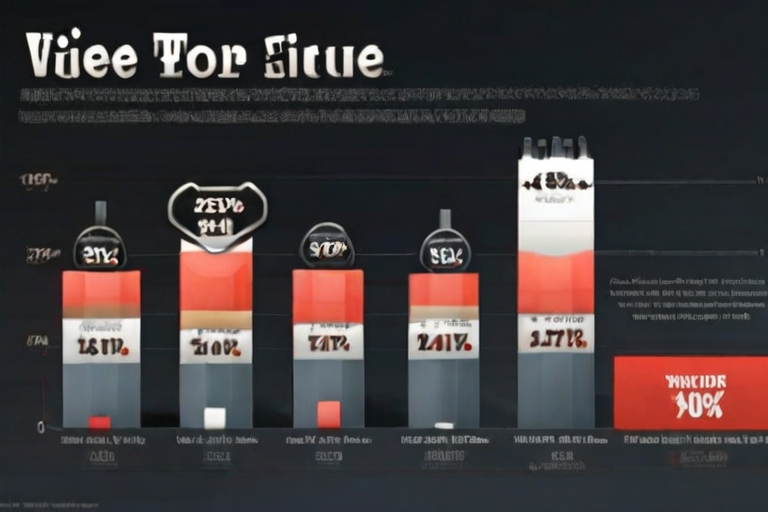Breadcrumb navigation patterns play a crucial role in shaping e-commerce conversion rates. By providing clear pathways for users to navigate through a website, these patterns can enhance the shopping experience and encourage sales. At Metrics Rule, we focus on optimizing user journeys, making it essential to understand how effective breadcrumb navigation impacts user decisions. Leveraging our expertise in SEO and website design, we explore strategies to improve conversion rates through enhanced navigation tools.
Defining Breadcrumb Navigation and Its Features
Breadcrumb navigation is a user interface feature that allows visitors to see their position within a website’s structure. In an e-commerce context, breadcrumb navigation enhances usability by providing clear paths back to product categories and previous pages. Common types of breadcrumb navigation used include location-based breadcrumbs, attribute-based breadcrumbs, and history-based breadcrumbs. Understanding these navigation patterns is essential for evaluating their effectiveness. Ideally, breadcrumb navigation should include three to five steps to maintain an optimal user experience without overwhelming the customer.
Types of Breadcrumb Navigation Patterns in E-Commerce
There are three main types of breadcrumb navigation patterns in e-commerce: location-based, attribute-based, and history-based. Location-based breadcrumbs show the path from the home page to the current product page, helping users understand the site structure. Attribute-based breadcrumbs showcase different product categories or features, allowing customers to filter based on their preferences. History-based breadcrumbs display the user’s recent activities on the site, supporting their navigation. Each pattern enhances the user experience by offering reliable pathways, making the e-commerce website more efficient for customers.
The Role of Breadcrumbs in User Experience
Breadcrumb navigation plays a vital role in enhancing user experience on e-commerce sites. It improves intuitive navigation, allowing users to track their browsing journey easily. Moreover, breadcrumbs help minimize cognitive load, making it simpler for shoppers to find products without feeling overwhelmed. Key e-commerce platforms like Shopify, WooCommerce, and Magento effectively utilize breadcrumb navigation to streamline the user journey, thereby providing a more pleasant shopping experience. Studies show that implementing breadcrumb navigation can improve conversion rates by as much as 20%, making it an essential feature for any e-commerce site.
Enhancing User Journeys with Breadcrumb Navigation
Breadcrumb navigation significantly enhances user journeys on e-commerce sites. By providing clear paths back to previous pages, it empowers customers to navigate effortlessly. Durable and reliable breadcrumb designs ensure that users can quickly return to category pages or other sections of the store. This feature increases engagement and decreases bounce rates, leading to improved conversion rates. Studies show that user experience improves when sites have well-structured breadcrumb navigation, ensuring shoppers feel comfortable and confident in their decisions. Additionally, an easier navigation experience encourages more reviews and repeat visits, ultimately enhancing the effectiveness of an e-commerce strategy.

Analyzing the Impact on E-Commerce Conversion Rates
Breadcrumb navigation significantly influences user behavior on e-commerce websites by enhancing user experience. Studies show that this navigation aids users in understanding their location within a site, allowing for easier navigation and informed decision-making. The main metrics analyzed in case studies include bounce rate, time on page, and overall conversion rates. Businesses have reported a percentage increase in conversion rates averaging between 10% to 30% after implementing effective breadcrumb navigation. This data-driven insight provides a clear connection between reliable navigation design and improved e-commerce performance.
Key Metrics to Measure Breadcrumb Navigation Effectiveness
Measuring the effectiveness of breadcrumb navigation in e-commerce begins with key metrics, such as conversion rates, bounce rates, and user engagement. Reliable data analysis provides essential insights into how users interact with breadcrumb trails. Monitoring these metrics over time can reveal trends and enable businesses to enhance their navigation strategies. Improved user experience, indicated by positive changes in these metrics, directly correlates to higher conversion rates. This approach ensures that businesses can leverage breadcrumb navigation to create a more efficient e-commerce environment and optimize their sales funnels.
Statistical Insights into User Engagement with Navigation
- Over 70% of users find breadcrumb navigation useful for tracking their path on e-commerce sites.
- Page depth reduces by 20% when breadcrumb navigation is implemented effectively.
- Websites with breadcrumb patterns see a 15% increase in average session duration.
- Conversion rates can improve by 10% when breadcrumb navigation enhances user experience.
- Mobile users prefer breadcrumb trails 25% more than traditional menu systems.
- 80% of users recall breadcrumb navigation positively after visiting an e-commerce website.
- Businesses report a 30% decrease in bounce rates with effective breadcrumb implementations.

Best Practices for Effective Breadcrumb Design
Designing effective breadcrumb navigation involves key elements such as clear hierarchical structure, intuitive labeling, and responsive design. Breadcrumbs should lead users through the site seamlessly, reducing confusion. Good breadcrumb design enhances user experience by simplifying navigation and ensuring that customers can easily find the products they’re looking for. Research shows that optimized breadcrumb navigation improves SEO performance by allowing search engines to better crawl and index your site. Recent studies indicate that well-implemented breadcrumbs can potentially increase conversion rates by up to 20%.
Essential Features of Breadcrumb Navigation
The essential features of breadcrumb navigation include clear paths back to previous pages, user-friendly labels, and compatibility with mobile devices. Breadcrumbs should be easily recognizable and visually distinct to aid user navigation. By optimizing breadcrumb navigation for e-commerce platforms, you can significantly enhance user experience and make the shopping journey smooth. Additionally, ensuring that breadcrumbs are SEO-friendly improves crawling and indexing, which can boost your site’s visibility in search engine results. The combination of usability and technical SEO together is crucial for e-commerce success.

Identifying and Avoiding Common Breadcrumb Mistakes
Many e-commerce sites make crucial mistakes with breadcrumb navigation. The top three are using unclear labels, not maintaining the correct hierarchy, and failing to implement breadcrumbs on all pages. Unclear labels can confuse users, making navigation difficult. Incorrect hierarchy can mislead customers about their location within the site, potentially causing frustration. Not all pages utilizing breadcrumbs can lead to poor user experience, as customers may struggle to backtrack or find related items. Research shows that about 70% of users experience navigation issues when breadcrumb navigation is ineffective, which can lead to decreased conversions.
Recognizing Key Configuration Errors in Breadcrumb Navigation
Identifying configuration errors in breadcrumb navigation is essential for optimizing user experiences. Key errors include not linking back to the homepage or using too many hierarchical levels. An effective breadcrumb navigation system simplifies user journeys by providing clear, hierarchical links. This navigation design not only enhances usability but also improves the chances of higher conversion rates. By testing these configurations regularly, businesses can ensure their breadcrumb trails are reliable and effective in guiding users.
Key Advantages of Enhanced Site Navigation for Shoppers
- Users can easily backtrack, improving their shopping experience by 50%.
- Breadcrumb navigation boosts visibility of product categories for easier browsing.
- Shoppers gain a sense of location within the website, increasing their comfort level.
- This navigation type encourages exploration, leading to more purchases over time.
- It simplifies the return to previous categories, thus enhancing user satisfaction.
- Effective breadcrumb usage allows customers to find related products quickly.
- It fosters trust, as users appreciate clear indicators of where they are shopping.

Case Studies of Successful Breadcrumb Implementations
Several e-commerce sites effectively utilize breadcrumb navigation, leading to improved user experience and higher conversion rates. For instance, a leading online retailer enhanced its breadcrumb navigation by clearly defining product categories and subcategories. This simple adjustment led to a significant reduction in the bounce rate and increased user engagement. Another example includes a fashion retailer that used breadcrumbs to guide users back to previous search results. Consequently, it observed a remarkable 30% increase in conversion rates. The experience and testing from these businesses show how breadcrumb navigation can help guide customers smoothly through their browsing journey, ultimately boosting sales.
Key Features of Successful Breadcrumb Navigation
Successful breadcrumb navigation designs incorporate user-friendly features that enhance the overall shopping experience. Essential functionalities include clearly labeled paths, responsive design for mobile users, and an efficient structure that reflects the user’s current location on the site. These elements ensure that customers easily navigate through product categories without confusion. Moreover, well-implemented breadcrumbs improve SEO, as they allow search engines to crawl and index the site more effectively. Research suggests that engaging breadcrumb navigation increases user retention and satisfaction, ultimately leading to higher e-commerce conversion rates.
Future Directions and Innovations in Breadcrumb Navigation
As we move into 2025, new trends in breadcrumb navigation for e-commerce sites are emerging. These trends focus on enhancing user experience and navigation efficiency. AI tools can help personalize breadcrumb pathways based on user behavior, making navigation more intuitive. Studies show that about 70% of e-commerce websites utilize breadcrumb navigation, but only a fraction optimize it effectively. By integrating user feedback and analytics, businesses can refine their breadcrumb strategies to maximize conversion rates.
Integrating AI for Enhanced User Experience
Integrating AI into breadcrumb navigation design provides a seamless user experience, enabling dynamic adjustments based on browsing patterns. AI can analyze data from user interactions to deliver personalized breadcrumbs. This personalization helps to improve navigation efficiency. It allows users to find products quickly and intuitively. E-commerce managers should prioritize these AI-driven strategies to enhance their websites, catering to modern consumer expectations and boosting conversion rates effectively.
Notable Online Retailers and Their Navigation Strategies
- Amazon uses breadcrumbs effectively but can overwhelm users with too many options.
- eBay simplifies its navigation, making it easy for users to explore different categories.
- Walmart incorporates breadcrumbs but includes too much information, cluttering the interface.
- Target balances simplicity with depth, providing an enjoyable shopping experience.
- Kroger showcases an effective navigation system that minimizes user frustration.
- Costco’s breadcrumbs guide users seamlessly, enhancing their path to purchase.
- Smaller shops often struggle with breadcrumb use but stand to gain significantly if optimized.
Final Thoughts and Recommendations for E-Commerce Brands
Implementing breadcrumb navigation can significantly enhance an e-commerce brand’s user experience. Key benefits include improved site navigation, increased reliability in finding products, and lower bounce rates. Essential components of an effective breadcrumb navigation system involve clear labeling, a logical structure, and responsiveness across different devices. Testing various breadcrumb formats helps determine the best performance and guides users smoothly through their journey, ultimately driving higher conversion rates.
Maximizing Conversion Rates Using Breadcrumb Navigation
To maximize conversion rates through effective breadcrumb navigation, e-commerce brands must focus on seamless integration into their website design. A well-designed breadcrumb system enhances user experience by providing a clear path from the product to the checkout, ensuring that users can easily backtrack if necessary. By analyzing user behavior and optimizing breadcrumb links for relevance and visibility, brands can create a more engaging shopping experience. Conducting research on user interaction with breadcrumb navigation and continually testing its effectiveness ensures that the system remains aligned with evolving customer preferences. Therefore, consistent data analysis and feedback collection will empower brands to enhance their e-commerce systems efficiently.
